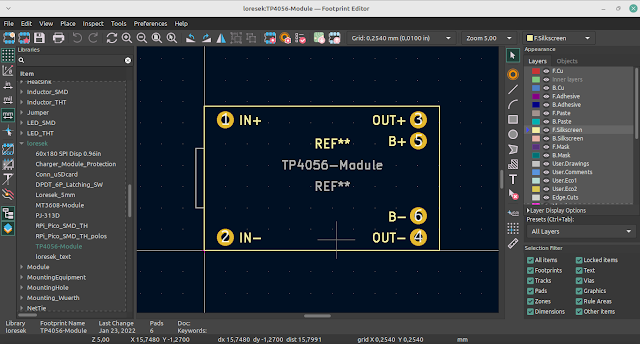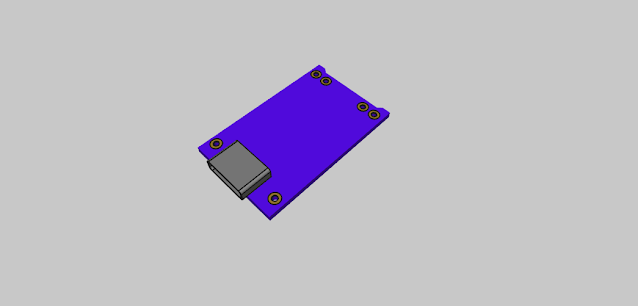Exploring the Benefits and Considerations of Bus Connections in Electronic Design
Introduction
In the realm of electronic design, KiCAD stands as a powerful software tool that offers a range of features to aid designers in creating efficient and organized schematics.
One such feature is the utilization of bus connections, which brings clarity and simplification to complex designs.
In this article, we will delve into the world of bus connections, discussing their advantages, potential considerations, and how to use them effectively in KiCAD.
Advantages of Bus Connections
Enhanced Organization and Clarity
 |
| Bus Connections in KiCAD - https://docs.kicad.org/master/en/eeschema/eeschema.html |
In KiCAD, bus connections provide a visual representation of interconnections, making it easier to comprehend and navigate large schematics.
By grouping related signals together, bus connections enhance the organization and clarity of the design, resulting in a more structured and manageable layout.
Simplified Design
 |
| Bus connections for simplified design - https://www.fruttenboel.nl/pads/kicad02.html |
By utilizing bus connections, designers can simplify complex designs in KiCAD. Rather than dealing with multiple individual wires, bus connections replace them with a single bus line.
This streamlines the schematic, reducing clutter and improving readability, enabling designers to focus on the crucial aspects of their design.
Easy Signal Tracing
KiCAD's bus connections simplify signal tracing, a critical aspect of design troubleshooting.
By following the bus line, designers can effortlessly trace the path of a signal and identify all the components connected to it.
This streamlined process accelerates debugging, making it more efficient and less time-consuming.
Scalability
KiCAD's bus connections are particularly useful when designing systems with multiple similar signals.
For example, in microcontroller or memory interfaces, addressing or data buses often require expansion or modification.
By utilizing bus connections, designers can easily expand or modify the bus without having to redraw multiple connections, ensuring scalability and flexibility.
Considerations for Using Bus Connections
Increased Complexity
While bus connections offer many advantages, they introduce complexity to the design process in KiCAD.
Managing and routing bus connections require careful attention to ensure accurate connection and labeling. Designers must validate their bus connections to avoid potential errors and issues.
Limited Flexibility
KiCAD's bus connections are most effective when dealing with a fixed number of signals. If a design requires frequent changes or varying numbers of connections, individual wires may be a more suitable choice, as bus connections may limit flexibility.
Impact on Routing
Designers must consider routing challenges when using bus connections in KiCAD. Constraints or limitations in the routing area may arise, necessitating careful planning.
Factors such as signal integrity, crosstalk, and noise issues should be considered to ensure optimal performance and prevent any undesirable effects on the signals.
Complexity in Layout
While bus connections simplify the schematic in KiCAD, they can add complexity to the subsequent PCB layout phase.
Designers must allocate sufficient space and consider the impact on layout when routing bus traces, adhering to spacing, differential signaling, and impedance matching requirements.
Using Bus Connections in KiCAD:
- Launch KiCAD and open your project in the schematic editor (Eeschema).
- Place the components that need to be connected with a bus.
- Add wire to the pin you want to connect with bus and labeled (e.g. Y1 to Y4)
- Select the "Bus" tool from the toolbar or use the corresponding hotkey (e.g., 'B').
- Click on the starting point of the bus and then click on the ending point to create a bus line.
- Continue creating additional bus lines to form the desired bus structure.
- Lebeled the bus with the syntax <PREFIX>[M..N] (e.g. Y[1..4]).
- Connect the pins of the components to the bus lines by using the "Unfold from Bus" right-click the Bus and select Unfold from Bus then select the wire name you want to connect to the component pins.
- Continue connecting other pins to complete the bus connections in your schematic.
Conclusion:
Bus connections in KiCAD offer numerous advantages, including enhanced organization, simplified designs, and streamlined signal tracing.
They are particularly useful for large designs, standardized interfaces, and scenarios where scalability is essential.
However, designers should be mindful of the potential complexities and limitations that bus connections can introduce, such as increased complexity in design and layout challenges.
By considering these factors and following the outlined steps in KiCAD, designers can leverage the benefits of bus connections while creating well-organized and efficient electronic designs.










